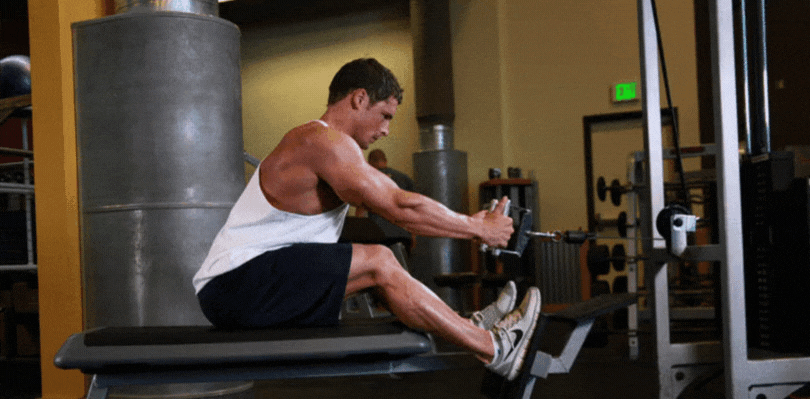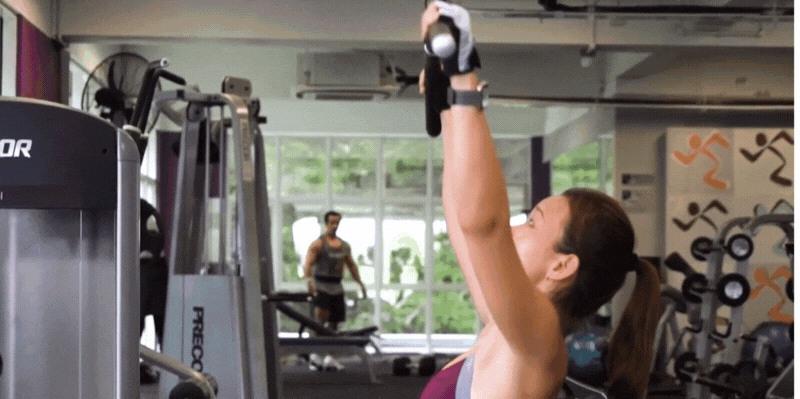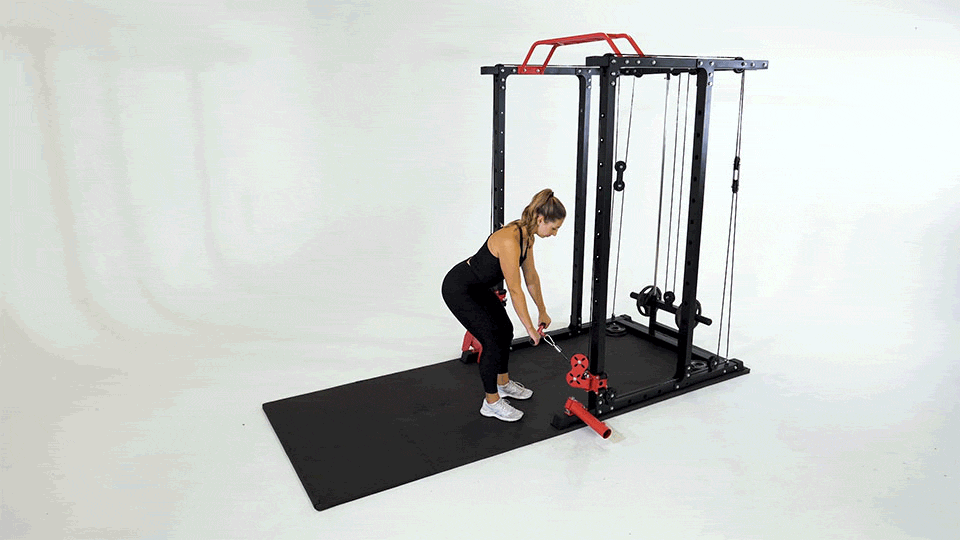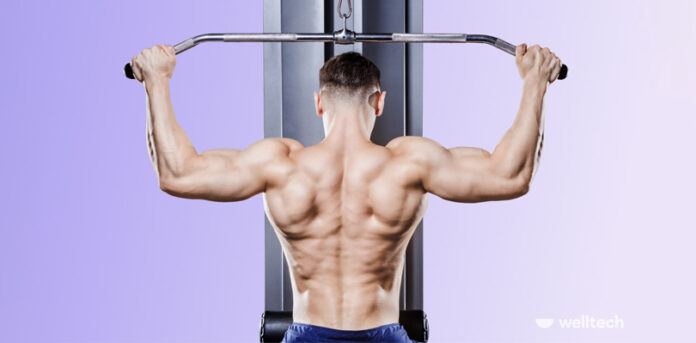Back cable workouts are a flexible and effective way to target the back muscles. Unlike free weights, cable machines provide constant tension throughout the range of motion, which helps in promoting muscle engagement and growth. Cable exercises are suitable for beginners and advanced fitness enthusiasts as they allow precise control of the adjustable resistance.
A strong, well-developed back is aesthetically pleasing and vital for overall fitness and functionality. The back muscles are essential in supporting the spine, maintaining proper posture, and aiding in various daily movements. Whether you’re an athlete, fitness enthusiast, or just aiming for a healthier lifestyle, incorporating back training into your workout routine is crucial.
Benefit Of Back Cable Workout
Cable workouts for the back muscles offer numerous benefits including improved physical fitness, strength, and appearance. Here are some key advantages:
- Targeted Muscle Engagement
- Isolation and Definition
- Versatility in Movement Patterns
- Reduced Joint Stress
- Improved Stability and Posture
- Enhanced Range of Motion
- Adaptability for All Fitness Levels
- Mind-Muscle Connection
- Variety in Workouts
- Integration into Overall Fitness Programs
5 Best Back Cable Workouts For Building Muscles
Let’s explore some back cable workouts, specifically designed to maximize back development. These exercises range from classic cable rows to targeted lat pulldowns, and when performed with proper form and consistency, they can contribute to achieving a strong and sculpted back. A well-developed back enhances your physical well-being and improves your overall aesthetic appeal.
Cable Rows

Standard cable rows are a fundamental exercise for targeting the muscles of the upper and middle back. Follow these steps to ensure proper form:
- Stand in front of the cable machine with your feet shoulder-width apart. Grasp the handle or attachment with an overhand grip, ensuring your hands are slightly wider than shoulder-width apart.
- Maintain a neutral spine with a slight bend in your knees. Engage your core and keep your chest up.
- Initiate the row by pulling the handle towards your midsection. Focus on squeezing your shoulder blades together as you pull.
- Slowly extend your arms back to the starting position, maintaining control throughout the movement.
- Inhale as you extend your arms, and exhale as you pull the handle towards you.
Muscles Targeted: Latissimus Dorsi (Lats), Rhomboids and Trapezius
Lat Pulldowns

Lat pulldowns are a classic and effective exercise primarily targeting the upper back muscles, especially the latissimus dorsi. This compound movement involves pulling a weighted cable bar down towards the upper chest, engaging the muscles responsible for shoulder adduction and extension. Here is a step-by-step guide on how to perform lat pulldowns correctly:
- Sit comfortably on the lat pulldown machine and adjust the thigh pads to secure your legs in place.
- Grasp the bar with both hands, palms facing forward, and hands slightly wider than shoulder-width apart.
- Relax your shoulders and engage your core.
- Start with your arms fully extended while allowing the bar to rise.
- Inhale and slightly lean back from your hips, maintaining a straight back.
- Pause briefly at the bottom of the movement to emphasize the contraction in your lat muscles.
- Slowly and with control, allow the bar to return to the starting position, fully extending your arms.
- Inhale as you release the bar, and exhale as you pull it down.
- Perform the desired number of repetitions, maintaining proper form throughout.
Targeted Muscles: Latissimus Dorsi (Lats), Trapezius (Upper), Rhomboids, Terres Major, Posterior Deltoids
Cable Face Pulls

Cable face pulls are an effective exercise for targeting the muscles in your upper back, shoulders, and rear deltoids. This exercise specifically emphasizes the muscles that are responsible for scapular retraction and external rotation of the shoulder joint.
Here’s how you can perform cable face pulls:
- Stand with a neutral spine and engage your core.
- Hold the rope handles with your palms facing down, and your arms extended fully in front of you.
- Pull the rope towards your face, leading with your elbows. Aim for the area between your forehead and the upper chest.
- Focus on retracting your shoulder blades as you pull, squeezing them together.
- Keep your elbows elevated and pointing outward throughout the movement.
- Pause at the contracted position, squeezing your upper back muscles.
- Slowly extend your arms back to the starting position.
- Inhale as you extend your arms, and exhale as you pull the rope towards your face.
- Perform the desired number of repetitions with controlled and deliberate movements.
Make sure to follow these steps to properly execute cable face pulls and get the most out of your workout.
Targeted Muscles: Latissimus dorsi, Rhomboids, Trapezius, Rear Deltoids, Teres Major, Posterior Deltoids.
Seated Cable Rows

Seated cable rows are a compound exercise designed to target the muscles of the upper and middle back, including the latissimus dorsi, rhomboids, and traps. This exercise is performed using a cable row machine that allows for a controlled pulling motion, promoting muscle engagement and development.
Equipment Setup
- Sit on the bench facing the cable stack.
- Adjust the seat height so that your feet are flat on the footrest or the floor.
- Choose the handle attachment you want to use (wide grip, narrow grip, or V-bar) and attach it to the cable.
- Adjust the weight on the stack according to your fitness level.
Here’s how to perform seated cable rows:
- Sit facing the cable stack on the machine.
- Adjust the seat height so your feet are flat on the footrest or floor.
- Choose a handle and attach it to the cable.
- Adjust the weight on the stack according to your fitness level.
- Grab the handles with your preferred grip – neutral or overhand.
- Sit with an upright posture, chest up, and back straight.
- Ensure your knees are slightly bent, and your feet are secure.
- Start the movement by retracting your shoulder blades.
- Flex your elbows and pull the handles towards your torso.
- Squeeze your shoulder blades together at the end of the movement.
- Maintain a full range of motion by pulling the handles towards your torso.
- Slowly extend your arms back to the starting position in a controlled manner.
- Inhale as you extend your arms, and exhale as you pull the handles.
Targeted Muscles: Latissimus dorsi, Rhomboids, Trapezius, Teres major, and Posterior deltoids

Cable deadlifts are a variation of the traditional deadlift exercise that involves using a cable machine to provide resistance. This back cable workout targets the muscles of the lower back, glutes, and hamstrings, promoting overall lower body strength and stability.
Here’s how to perform it:
- Adopt a hip-width stance with your toes pointing forward.
- Grip the bar with an overhand grip, hands positioned shoulder-width apart.
- Keep your arms fully extended, and shoulders back, and engage your core.
- Hinge at your hips and bend your knees slightly, lowering your torso towards the ground.
- Maintain a straight back and keep the bar close to your shins as you descend.
- Push through your heels to stand up straight, extending your hips and knees simultaneously.
- Squeeze your glutes at the top of the movement, ensuring full hip extension.
- Lower the bar back down in a controlled manner, returning to the starting position.
Targeted Muscles: Erector spinae (lower back), Gluteus maximus (glutes), Hamstrings, Adductors, and Gastrocnemius (calves)
FAQs
Why should I incorporate back cable workouts into my routine?
Back cable workouts offer versatile and targeted exercises that effectively engage muscles like the latissimus dorsi, rhomboids, and trapezius. The cable machine provides constant tension, promoting muscle development, improved posture, and enhanced overall back strength.
Can back cable workouts replace traditional free-weight exercises?
Back cable workouts can complement traditional free-weight exercises, offering a different stimulus and muscle engagement. They provide variety in your routine, helping to target specific muscles from various angles. Integrating both cable and free-weight exercises can contribute to a well-rounded and balanced back training program.
How often should I include back cable workouts in my training routine?
The frequency of back cable workouts depends on your overall training program. Including them 1-2 times per week can be effective. However, individual preferences, goals, and the structure of your training split should guide the frequency. It’s essential to allow for proper recovery between sessions to optimize muscle growth and prevent overtraining.

